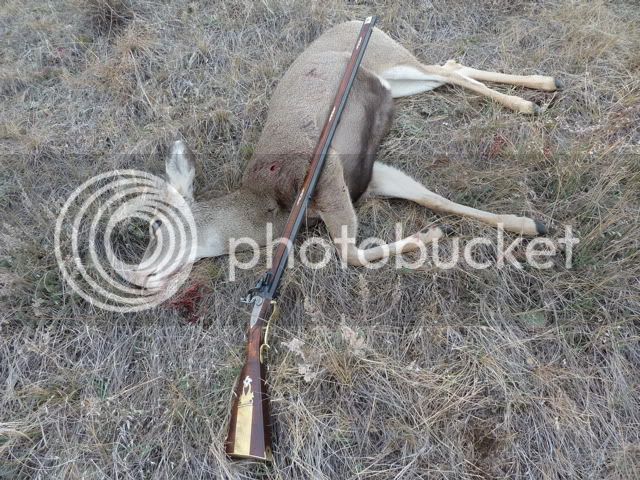John Wasmuth
50 Cal.
- Joined
- Nov 8, 2005
- Messages
- 1,328
- Reaction score
- 6
All I use for hunting, or shooting for that matter, is Hornady roundballs, they flatten out nice be it deer or hogs, elk and buffalo as well.

Wolf Eyes said:I like neck shots on deer -- just the way I was taught a long time ago. How effective are .50 cal round balls taking neck shots? Centerfire neck shots drop deer instantly. Same for PRB? Thanks.
hanshi said:The thing about the soft round ball is that it will expand even at low velocity. Try that with a bullet.


GoodCheer said:Lead round nosed bullets are generally not favored by hunters because they think the nose form can give poor results on game. And, they are correct unless the round nose is heavy enough, big enough in diameter and moving fast enough.
FPDoc said:It seems that modern ballistics and bullet research is to try and get a smaller bullet with a flatter trajectory to act like a big round ball as soon as it hits a target. We tend to skip the middle ground, sneak up on our target and take it with the round ball from the start. :thumbsup:
Josh Smith said:GoodCheer said:Lead round nosed bullets are generally not favored by hunters because they think the nose form can give poor results on game. And, they are correct unless the round nose is heavy enough, big enough in diameter and moving fast enough.
Not... necessarily.
Josh
paulvallandigham said:The limiting factor of shooting a RB out of a SMOOTHBORE is that there is NO rifling to spin the ball. If the ball is fired out of a rifled, barrel, you have NO difference in velocity between a percussion action and a flintlock action, providing that the correct amount of powder is used in both guns to produce the same MV.
Your statement here merely confirms that of my own.
I completely agree with everything else you've stated here, as well.
Thank you! :applause:
GoodCheer said:Josh Smith said:GoodCheer said:Lead round nosed bullets are generally not favored by hunters because they think the nose form can give poor results on game. And, they are correct unless the round nose is heavy enough, big enough in diameter and moving fast enough.
Not... necessarily.
Josh
That hunters generally do not favor lead round noses or that lead round noses are considered to give poor performance unless they are heavy enough, big enough in diameter and moving fast enough?
FPDoc said:"Lead wadcutters and semi-wadcutters are still sometimes favored by defensive shooters..."
In the 70's we would load hollow base wadcutters backwards in snubbie .38's/.44's, they tended to want to flip around and "fly right" eventually but for the first few yards they were acceptably accurate and expanded ferociously.
Enter your email address to join: